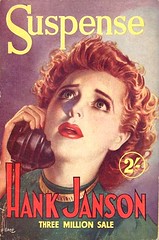Once you’ve settled on the who and the what, the when might still need a little fine tuning. In Revision And Self-Editing, James Scott Bell gives a great rule of thumb: “act first, explain later” (132). Start with action—a character doing something—and explain only what’s absolutely necessary, and even then, wait as long as possible.
 There are other advantages to this approach, too. The primary advantage is that it piques the reader’s curiosity. This hearkens back to our series on tension and suspense, where one technique to increase tension within a scene is to start the scene with a bang.
There are other advantages to this approach, too. The primary advantage is that it piques the reader’s curiosity. This hearkens back to our series on tension and suspense, where one technique to increase tension within a scene is to start the scene with a bang.
One great way to create tension is not to explain these actions—at first. The reader is taken aback by this interesting or inexplicable action—and they’re eager to not only find out what happens next, but to learn why this is happening now.
As James Scott Bell says in Revision And Self-Editing, you can “marble in” this sequel information through the beginning of the scene.
This works on a story-level as well as the scene-level when used in the opening.
When done well, opening with action also helps to anchor us in the POV character’s head far better than, say, starting with their thoughts off in space could. Rather than thinking about the backstory, the character should be acting based on the backstory. Then slipping in that information will be natural.
In Don’t Murder Your Mystery, Chris Roerden distinguishes between “backstory,” the events that take place before a story starts, and “background,” which supplies information that was or still is true. To use yesterday’s example, Hamlet’s father being dead and his mother marrying his uncle are part of the background. By Chris’s definition, then, we want to get the background in so the story makes sense, but not so much we slow the story down—a classic problem of backstory.
Tomorrow we have a guest post from the magnificent Margie Lawson with more about managing backstory!
What do you think? What kind of action do you start with?
Photo by Horia Varlan
 James Scott Bell highlights one reason why these elements are so important: “Modulating tension is one of the keys to writing fiction” (
James Scott Bell highlights one reason why these elements are so important: “Modulating tension is one of the keys to writing fiction” ( looking at my own work.
looking at my own work.




 But then again, you might. Just as tension springs from conflict, suspense is created by anticipation. So the same things that fix scene tension might not fix story suspense.
But then again, you might. Just as tension springs from conflict, suspense is created by anticipation. So the same things that fix scene tension might not fix story suspense. ). Only you can tell what’s right for your story (and even then,
). Only you can tell what’s right for your story (and even then, 